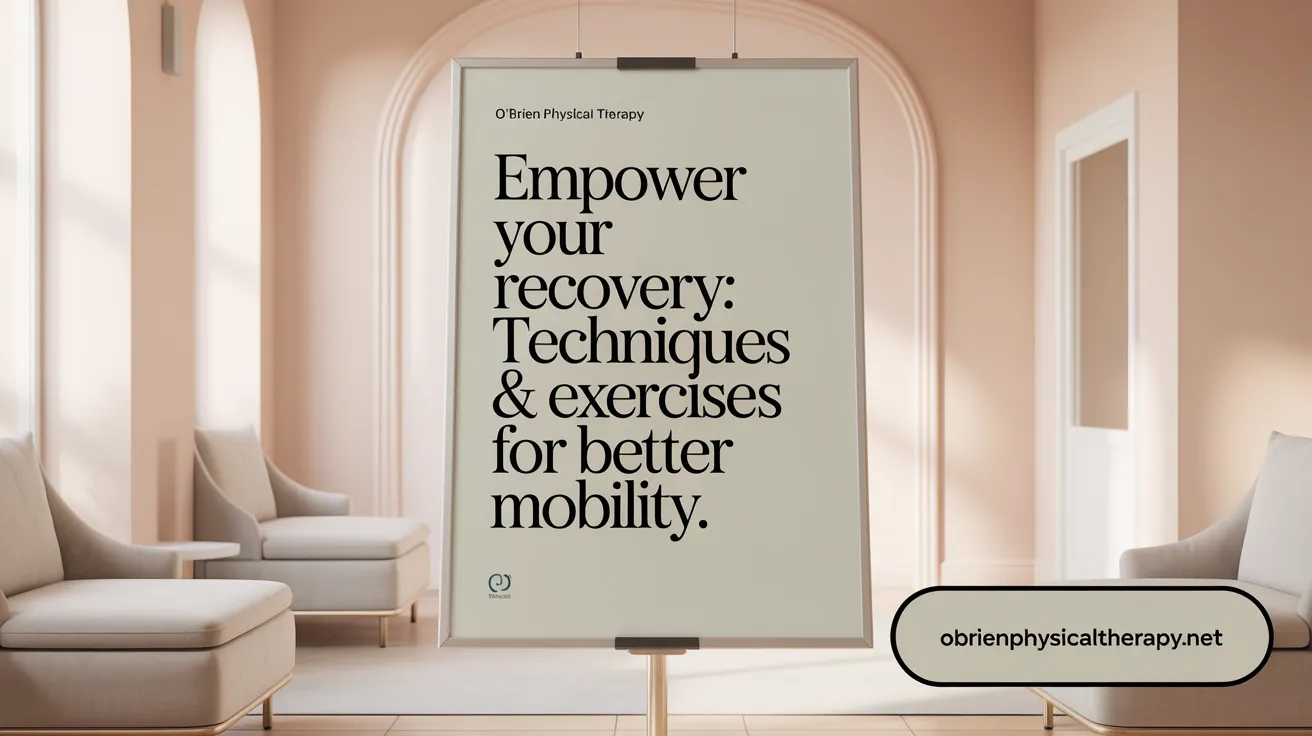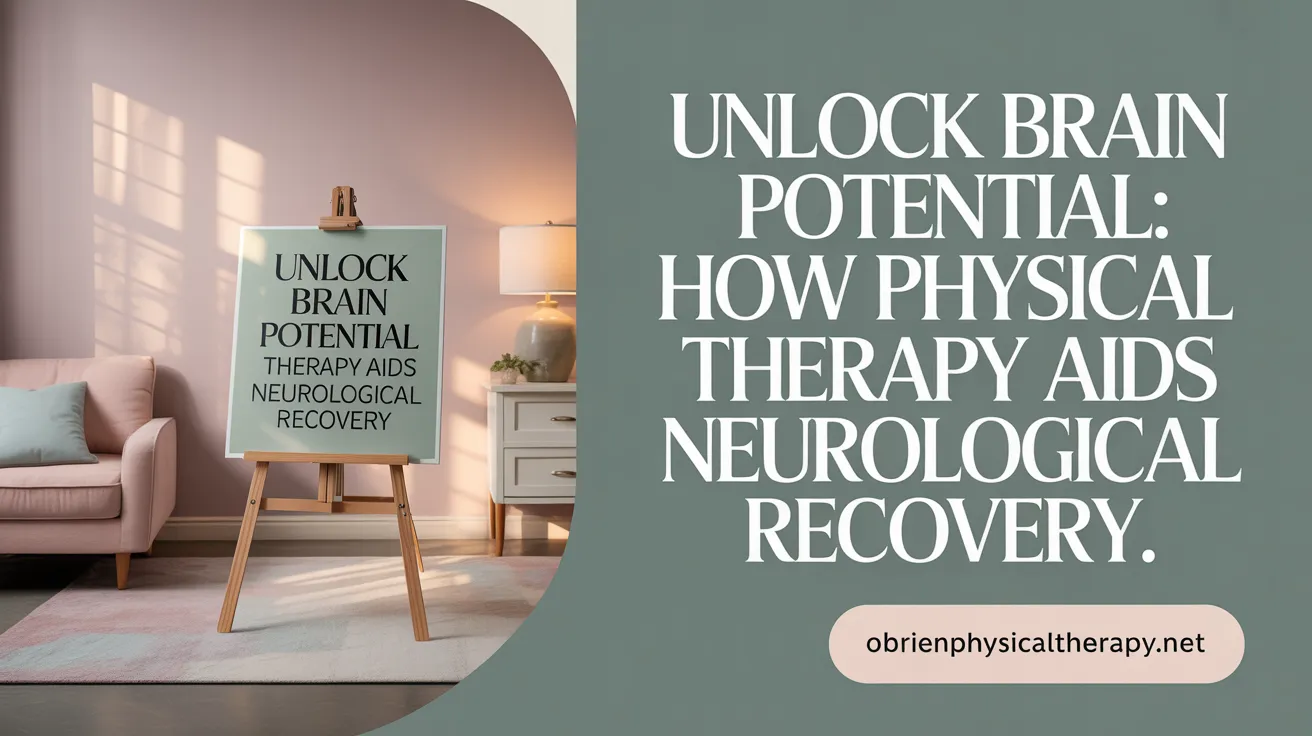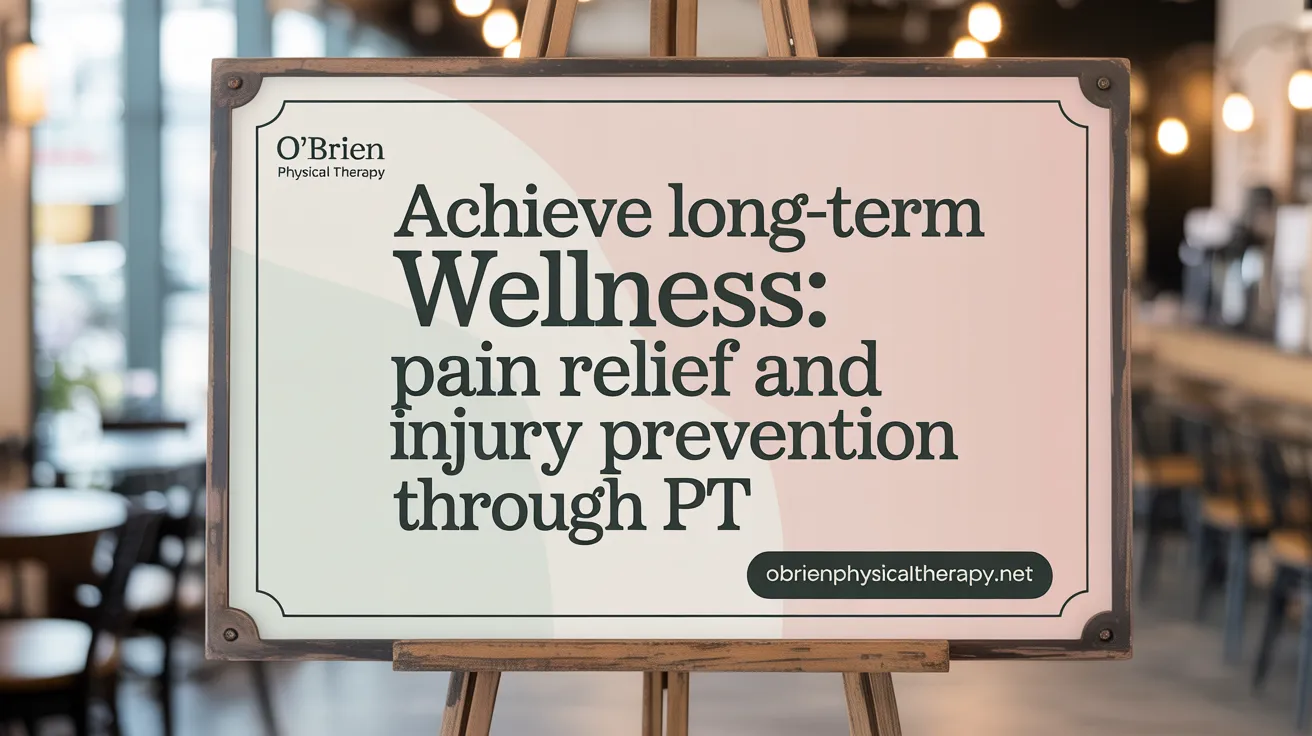Regaining Control Over Your Life with Physical Therapy
Physical therapy is more than just recovery—it is a pathway to reclaiming your mobility, autonomy, and quality of life. Whether due to injury, surgery, chronic conditions, or the natural aging process, physical therapy offers personalized, science-backed strategies to restore function and independence. This article explores how physical therapy empowers individuals to move, live, and thrive with confidence and freedom.
The Multifaceted Benefits of Physical Therapy: Mobility, Pain Relief, and Quality of Life
 Physical therapy offers a wide range of advantages that significantly enhance an individual's daily life. One of its primary benefits is the improvement of mobility. Through personalized exercises, manual therapy, and various modalities, physical therapists help patients regain strength, flexibility, and a full range of motion. This is especially beneficial for those recovering from injury, surgery, or managing chronic conditions like arthritis or neurological disorders.
Physical therapy offers a wide range of advantages that significantly enhance an individual's daily life. One of its primary benefits is the improvement of mobility. Through personalized exercises, manual therapy, and various modalities, physical therapists help patients regain strength, flexibility, and a full range of motion. This is especially beneficial for those recovering from injury, surgery, or managing chronic conditions like arthritis or neurological disorders.
Pain relief is another crucial aspect. Techniques such as stretching, massage, joint mobilization, and modalities like heat, cold, and electrical stimulation are employed to reduce discomfort. For example, patients with back pain or joint issues often experience significant relief, allowing them to engage more comfortably in everyday activities.
Injury prevention is also a vital objective of physical therapy. Strengthening weak muscles, enhancing balance, and correcting poor posture help minimize the risk of falls and other injuries. For athletes and active individuals, targeted exercises and gait training promote safe participation in sports and physical activities.
Beyond physical improvements, therapy contributes to overall quality of life. Managing symptoms of long-term conditions like stroke or Parkinson's improves independence and confidence. It encourages active living, supports healthier habits, and ultimately enables individuals to participate fully in work, hobbies, and social interactions.
In summary, physical therapy is a comprehensive approach that not only restores function and alleviates pain but also promotes ongoing health and independence. This holistic benefit makes it an essential component of healthcare for people of all ages.
Restoring Independence After Injury, Surgery, and Aging: How Physical Therapy Makes a Difference

How can physical therapy help individuals regain independence after injury, surgery, or aging?
Physical therapy is essential for helping people recover mobility, strength, and confidence after various setbacks. It involves individualized exercise programs that focus on improving movement, flexibility, and balance. For older adults, physical therapy addresses age-related physiological changes such as muscle weakening and joint stiffness, which can hinder daily activities.
Techniques like gait training and balance exercises are used to reduce falls and improve walking ability. Additionally, therapists educate patients on injury prevention strategies, helping them avoid future accidents. This combination of targeted treatment and practical advice enables individuals to manage their health, perform daily tasks independently, and avoid more invasive procedures.
Overall, physical therapy supports a full, active life by restoring functional ability, boosting confidence, and helping people remain in their homes longer, even as they age or recover from injury or surgery.
Physical Therapy Techniques and Exercises: Tools for Recovery and Functional Improvement

What physical therapy techniques, methods, and exercises are commonly used to facilitate recovery and improve physical function?
Physical therapy employs a variety of techniques and exercises aimed at restoring mobility, reducing pain, and enhancing overall physical capacity. Manual therapy is a cornerstone of treatment, involving hands-on methods such as massage, joint mobilization, and myofascial release. These techniques help alleviate muscle tension, improve joint movement, and promote tissue healing.
Active and passive exercises form another essential component. Therapeutic stretching exercises, including hamstring, piriformis, and hip flexor stretches, are utilized to increase flexibility and joint range of motion. To build strength, patients often perform exercises like bridges, clamshells, and straight leg raises, which target specific muscle groups and improve control and endurance.
Balance, coordination, and gait training are crucial for regaining functional movement and preventing falls. These activities often involve the use of assistive devices such as walkers or canes, especially for patients with neurological or age-related balance issues.
Modalities like electrical stimulation, heat and cold therapy, ultrasound, laser therapy, and other physical stimuli are used to support healing, reduce inflammation, and manage pain. These treatments are often combined with active exercises to maximize recovery.
Patient education, is also vital. Therapists instruct individuals on proper body mechanics, posture, and activities of daily living. Functional training programs enable patients to regain independence, ensuring they can safely perform tasks at home, work, or in sports.
Together, these techniques and exercises form a comprehensive approach that addresses individual needs, promotes healing, and enhances long-term mobility and health.
Physical Therapy’s Vital Role in Neurological Recovery and Managing Chronic Illness

How does physical therapy contribute to recovery from neurological conditions such as brain injuries or chronic illnesses?
Physical therapy plays a crucial part in helping individuals recover from neurological conditions, including brain injuries, stroke, multiple sclerosis, Parkinson's disease, and other chronic neurological disorders. A primary mechanism behind this recovery is neuroplasticity — the brain's ability to reorganize and form new neural connections after injury.
Through specialized, task-oriented exercises and repetitive training, physical therapy encourages the nervous system to rewire itself, which can improve motor skills, strength, and coordination. For example, gait training and balance exercises help restore walking and minimize fall risk, while strength training enhances muscle control. Manual therapies, including joint mobilization and soft tissue work, address secondary issues like spasticity and muscle weakness.
In addition to physical improvements, PT focuses on promoting overall health and well-being by integrating strategies such as cardiovascular exercises, sleep hygiene, stress reduction techniques, and lifestyle modifications. These approaches help prevent deterioration, reduce secondary complications, and support ongoing functional independence.
Getting started early with a personalized therapy plan is essential. This ensures optimal outcomes, boosts confidence, and enhances quality of life for individuals navigating complex neurological challenges.
How It Works and Why It Matters
| Aspect | Description | Additional Notes |
|---|---|---|
| Neuroplasticity | Promotes brain rewiring after injury | Critical for functional recovery (source) |
| Task-specific training | Motor relearning through real-world tasks | Improves daily function (source) |
| Balance and coordination | Exercises to restore stability | Reduces falls risk (source) |
| Managing secondary symptoms | Addressing muscle weakness, spasticity | Supports mobility (source) |
| Lifestyle modifications | Exercise, ergonomics, stress management | Maintains improvements (source) |
Physical therapy remains an invaluable component in comprehensive neurological care, helping individuals regain independence, improve mobility, and better manage long-term health challenges.
Long-Term Success: Education, Pain Management, and Avoidance of Surgery through Physical Therapy
 Physical therapy plays a crucial role in reducing the necessity for surgical interventions by addressing underlying issues that cause pain and functional impairment. Therapists use targeted exercises aimed at strengthening muscles, enhancing flexibility, and correcting movement patterns. These strategies often lead to improved joint mobility and support, alleviating symptoms naturally and decreasing reliance on invasive procedures. Modalities such as heat, cold, ultrasound, and electrical stimulation further help in managing pain effectively without surgery.
Physical therapy plays a crucial role in reducing the necessity for surgical interventions by addressing underlying issues that cause pain and functional impairment. Therapists use targeted exercises aimed at strengthening muscles, enhancing flexibility, and correcting movement patterns. These strategies often lead to improved joint mobility and support, alleviating symptoms naturally and decreasing reliance on invasive procedures. Modalities such as heat, cold, ultrasound, and electrical stimulation further help in managing pain effectively without surgery.
Preoperative physical therapy, or prehabilitation, prepares patients physically and mentally before surgery, which can lead to better surgical outcomes and faster recovery. Post-surgical therapy then aids in restoring strength and mobility, preventing re-injury and supporting long-term health.
A vital aspect of physical therapy’s success is patient education. Therapists teach individuals proper body mechanics, injury prevention techniques, and self-management strategies. This knowledge encourages continued physical activity and healthy habits, fostering independence and maintaining mobility over time.
Patients learn how to perform self-care, incorporate safe exercise routines into daily life, and recognize early signs of potential issues. These educational components empower individuals, helping them manage chronic conditions, reduce pain, and stay active. Educated patients are more likely to adhere to treatment plans and sustain behavioral changes that promote lifelong health.
Ultimately, physical therapy’s combination of effective pain management, surgical avoidance, and health education supports patients in maintaining mobility and independence. This holistic approach enhances quality of life by reducing pain, preventing future injuries, and fostering active, self-sufficient living.
Empowering Independence Through Physical Therapy
Physical therapy is a cornerstone of regaining independence, offering comprehensive benefits that span pain relief, improved mobility, injury prevention, and enhanced quality of life. With personalized treatment plans incorporating effective techniques and exercises, individuals recovering from injury, surgery, or navigating the challenges of aging can restore strength, confidence, and autonomy. Specialized care for neurological conditions further underlines its vital role in rehabilitation and recovery. By emphasizing education and self-management, physical therapy not only addresses immediate needs but also equips patients to sustain long-term health and independence. Embracing physical therapy is a proactive investment in reclaiming control over life’s activities and enjoying fuller, active living.
